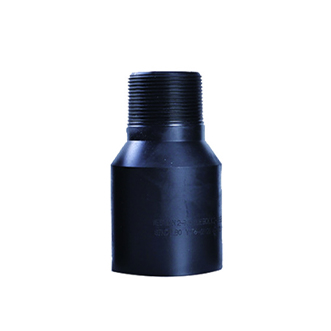- Afrikaans
- Albanian
- Amharic
- Arabic
- Armenian
- Azerbaijani
- Basque
- Belarusian
- Bengali
- Bosnian
- Bulgarian
- Catalan
- Cebuano
- Corsican
- Croatian
- Czech
- Danish
- Dutch
- English
- Esperanto
- Estonian
- Finnish
- French
- Frisian
- Galician
- Georgian
- German
- Greek
- Gujarati
- Haitian Creole
- hausa
- hawaiian
- Hebrew
- Hindi
- Miao
- Hungarian
- Icelandic
- igbo
- Indonesian
- irish
- Italian
- Japanese
- Javanese
- Kannada
- kazakh
- Khmer
- Rwandese
- Korean
- Kurdish
- Kyrgyz
- Lao
- Latin
- Latvian
- Lithuanian
- Luxembourgish
- Macedonian
- Malgashi
- Malay
- Malayalam
- Maltese
- Maori
- Marathi
- Mongolian
- Myanmar
- Nepali
- Norwegian
- Norwegian
- Occitan
- Pashto
- Persian
- Polish
- Portuguese
- Punjabi
- Romanian
- Russian
- Samoan
- Scottish Gaelic
- Serbian
- Sesotho
- Shona
- Sindhi
- Sinhala
- Slovak
- Slovenian
- Somali
- Spanish
- Sundanese
- Swahili
- Swedish
- Tagalog
- Tajik
- Tamil
- Tatar
- Telugu
- Thai
- Turkish
- Turkmen
- Ukrainian
- Urdu
- Uighur
- Uzbek
- Vietnamese
- Welsh
- Bantu
- Yiddish
- Yoruba
- Zulu
Understanding the Role of Casing Collars in Oil and Gas Drilling Operations
Understanding Casing Collars An Essential Component in Oil and Gas Drilling
In the oil and gas drilling industry, the integrity and efficiency of operations greatly depend on various components used in the drilling process. One such vital component is the casing collar. Casing collars play a significant role in well construction and stability, ensuring that the wellbore can withstand the pressures encountered during drilling and production.
What is a Casing Collar?
A casing collar is a thickened section of casing that is used to connect different sections of casing in a wellbore. Typically, these collars are positioned at intervals along the casing string and serve multiple purposes. They enhance the strength of the casing, provide a reliable seal, and facilitate the installation and operation of other downhole equipment, such as packers and liners.
Casing collars are generally manufactured from high-grade steel to withstand the harsh conditions of subsurface environments, including high pressure, corrosive fluids, and extreme temperatures. The design and specification of casing collars may vary depending on the geological conditions of the drilling site and the specific requirements of the well being drilled.
Functions and Importance of Casing Collars
1. Structural Integrity Casing collars increase the overall strength of the casing string. By acting as anchors at specific intervals, they help maintain the wellbore's structural integrity against collapsing under the weight of the surrounding rock and soil.
2. Pressure Management During drilling and production, high-pressure fluids are often encountered. Casing collars help to manage these pressures by creating a robust seal that reduces the risk of leaks and blowouts. This is crucial for protecting both worker safety and the environment.
casing collar

3. Facilitating Equipment Installation Casing collars are designed to work with various downhole tools and equipment. For instance, packers, which are used to isolate sections of the well and control fluid flow, require proper anchoring that casing collars provide. These collars serve as points of support and attachment, ensuring seamless integration of downhole technologies.
4. Corrosion Resistance Given the corrosive nature of fluids encountered in wells, casing collars are often treated or coated to enhance their resistance to corrosion. This longevity ensures that the collars remain effective throughout the lifespan of the well.
5. Ease of Maintenance Casing collars enable easier maintenance and modifications to the well. If adjustments are needed, collars can provide points at which tools can be deployed to remediate issues without the need for extensive intervention.
Challenges and Innovations
While casing collars are crucial for well integrity, they are not without challenges. The installation of casing collars must be precise to prevent issues such as misalignment or insufficient sealing. Moreover, advancements in drilling technology have necessitated improvements in casing collar designs to accommodate high-performance drilling systems.
Innovations such as enhanced material formulations and advanced machining techniques are helping to create more effective casing collars. These developments focus on improving the strength-to-weight ratio, ensuring that collars can endure extreme conditions while minimizing the overall weight of the casing string.
Conclusion
Casing collars are indispensable in the modern oil and gas drilling landscape. Their role in providing structural strength, pressure management, and equipment support underscores their importance in maintaining well integrity and operational safety. As the industry continues to evolve, advancements in casing collar technology will undoubtedly contribute to more efficient and safer drilling practices, ultimately driving progress in energy production. Understanding and recognizing the significance of these components will continue to be vital for all stakeholders involved in the exploration and extraction of natural resources.
-
Tubing Pup Joints: Essential Components for Oil and Gas OperationsNewsJul.10,2025
-
Pup Joints: Essential Components for Reliable Drilling OperationsNewsJul.10,2025
-
Pipe Couplings: Connecting Your World EfficientlyNewsJul.10,2025
-
Mastering Oilfield Operations with Quality Tubing and CasingNewsJul.10,2025
-
High-Quality Casing Couplings for Every NeedNewsJul.10,2025
-
Boost Your Drilling Efficiency with Premium Crossover Tools & Seating NipplesNewsJul.10,2025







